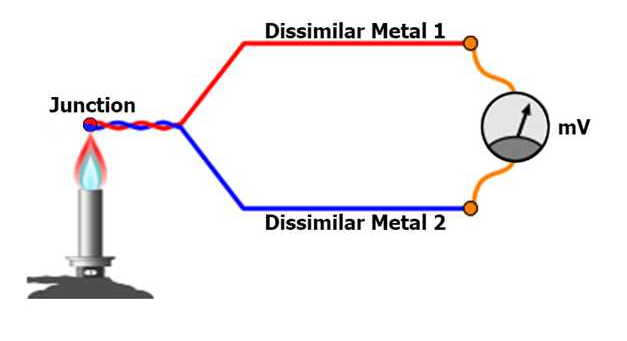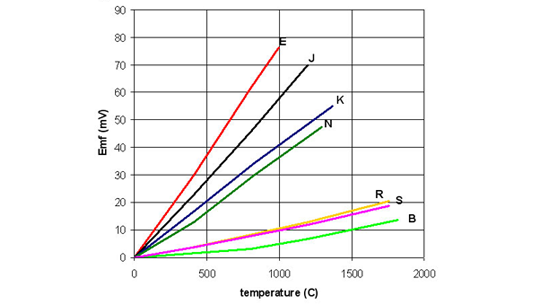MENU
What is thermocouple?
A thermocouple is a junction between two different metals that produces a voltage related to a temperature difference. When two wires composed of dissimilar metals are joined at both ends and one of the ends is heated, there is a continuous current which flows in the thermoelectric circuit (the thermoelectric effect or Seebeck effect).

Need for reference junction( cold junction):
In thermocouples, voltage is developed due to flow of electric current. This current flow depends upon the difference in temperatures at the two ends of conducting wire. That is thermocouples always measure difference in temperatures and not absolute temperature.
To measure the temperature of one junction, the other junction is kept at some reference temperature. As this is done by using ice bath, it is normally called at cold junction.
Using ice bath for constant temperature is useful for laboratory calibration, but is not convenient for most measurement and control applications. Instead of ice bath, an effect of cold junction is added using a thermally sensitive device such as a thermistor or diode. This is also called as isothermal block. Special care is taken to minimize any temperature gradient between terminals. Hence, the voltage from a known cold junction can be simulated, and the appropriate correction is applied. This is known as cold junction compensation.
Software Compensation:
Software compensation is the most versatile technique used for measuring thermocouples. Many thermocouples can be connected on the same block. The technique is independent of the types of thermocouples. All of the conversions are performed by the computer. The disadvantage is that the computer requires additional time to calculate the reference junction temperature. For maximum speed we can use hardware compensation.
Hardware Compensation:
Hardware compensation can be viewed as inserting a battery that cancels the offset voltage produced by the reference junction. These commercially available circuits provide an electronic ice point reference. Their main advantage is speed while the disadvantage is that it is suited to compensate only a particular type of thermocouple.
Different Thermocouple Types:
Thermocouples are available in different combinations of metals, each with its own unique characteristics in terms of temperature range, durability, vibration resistance, chemical resistance, and application compatibility.
The graph below shows the thermocouple characteristics and relationship of temperature vs. mV output for all main base metal and nobel thermocouple types. This shows that Thermocouples have a relatively linear output.

The thermocouple data loggers we produce handle the software compensation and the programmable range selections cover all types of thermocouples. Please visit the related product pages for details.